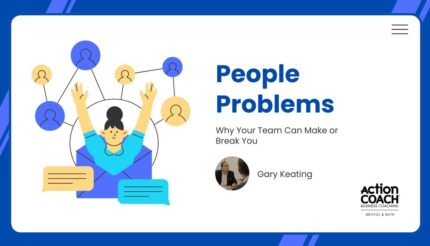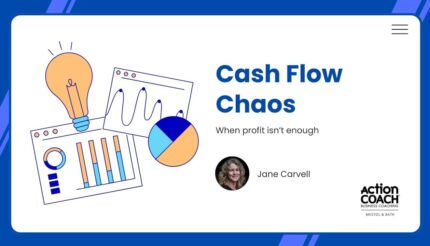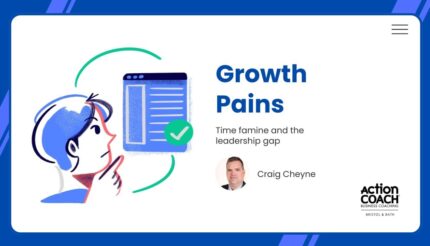Explore the crucial role of customer retention strategies in ensuring the growth and sustainability of your business.
The Importance of Customer Retention for Business Growth
Customer retention is a critical aspect of business growth. While acquiring new customers is important, retaining existing customers is equally if not more crucial. Losing customers can have a significant impact on the bottom line and hinder the overall growth of the business.
When customers leave, it can feel like a loss because it represents a missed opportunity to continue building a long-term relationship. Additionally, losing customers may indicate that there are underlying issues with the products, services, or customer experience provided by the business. By focusing on customer retention, businesses can minimise customer churn and maximise their revenue potential.
Customer retention also contributes to the sustainability of a business. Loyal customers not only continue to generate revenue through repeat purchases but also act as brand advocates, referring new customers and contributing to positive word-of-mouth marketing. This can help businesses establish a strong reputation and gain a competitive edge in the market.
Identifying Key Factors that Influence Customer Loyalty
Understanding the factors that influence customer loyalty is essential for developing effective customer retention strategies. Some key factors include:
1. Customer satisfaction: Satisfied customers are more likely to remain loyal to a business. It is important to consistently deliver high-quality products and services that meet or exceed customer expectations.
2. Trust and reliability: Building trust with customers is crucial for fostering loyalty. Businesses should focus on delivering on their promises, being transparent, and providing reliable customer support.
3. Personalised experiences: Customers appreciate personalised interactions and tailored recommendations. By understanding their preferences and needs, businesses can create customised experiences that enhance customer loyalty.
4. Competitive pricing and value: Offering competitive prices and providing value-added benefits can help businesses retain customers. Customers are more likely to stay with a business that offers a good balance between price and value.
By identifying these key factors and incorporating them into customer retention strategies, businesses can increase customer loyalty and reduce churn.
Implementing Effective Communication Strategies to Keep Customers Engaged
Effective communication plays a vital role in keeping customers engaged and fostering loyalty. Here are some strategies to consider:
1. Regularly communicate with customers: Regular communication helps businesses stay connected with customers and maintain top-of-mind awareness. This can be done through various channels such as email newsletters, social media updates, and personalised messages.
2. Provide relevant and valuable content: Sharing informative and relevant content can help businesses establish themselves as industry experts and provide value to customers. This can include blog posts, articles, how-to guides, and educational resources.
3. Seek feedback and listen to customers: Actively seeking feedback from customers and listening to their concerns and suggestions can make them feel valued and appreciated. It also provides businesses with valuable insights for improving their products and services.
4. Offer proactive customer support: Providing prompt and efficient customer support is crucial for customer retention. Businesses should be readily available to address any issues or questions that customers may have, ensuring a positive customer experience.
By implementing these communication strategies, businesses can foster engagement, build stronger relationships with customers, and increase their chances of retaining them.
Leveraging Customer Feedback to Enhance Service Quality
Customer feedback is a valuable resource for businesses to enhance their service quality and improve customer retention. Here’s how businesses can leverage customer feedback:
1. Collect feedback through surveys and reviews: Regularly collect feedback from customers through surveys, online reviews, and social media platforms. This provides businesses with insights into areas that need improvement and helps them identify patterns or trends.
2. Analyse feedback and identify areas for improvement: Analyse the feedback received and identify common themes or issues. This can help businesses prioritise areas for improvement and develop action plans to address them.
3. Use feedback to drive continuous improvement: Actively use customer feedback to drive continuous improvement in products, services, and overall customer experience. Implementing changes based on customer suggestions and addressing their concerns can help businesses retain customers and enhance their loyalty.
4. Communicate changes and improvements to customers: Once changes have been made based on customer feedback, it is important to communicate these improvements to customers. This shows that their feedback is valued and that the business is committed to providing a better experience.
By leveraging customer feedback effectively, businesses can enhance their service quality, meet customer expectations, and ultimately improve customer retention.
Innovative Rewards and Loyalty Programs that Drive Retention
Rewards and loyalty programs can be powerful tools for driving customer retention. Here are some innovative ideas to consider:
1. Tiered loyalty programs: Implement a tiered loyalty program that offers increasing rewards and benefits as customers move up the tiers. This encourages customers to stay engaged and make repeat purchases to unlock higher rewards.
2. Personalised rewards: Tailor rewards to individual customers based on their preferences and purchase history. This can include personalised discounts, exclusive offers, or freebies that are relevant to their interests.
3. Gamification elements: Incorporate gamification elements into the loyalty program to make it more engaging. This can include challenges, badges, or points that customers can earn and redeem for rewards.
4. Surprise and delight rewards: Occasionally surprise customers with unexpected rewards or special perks to delight and exceed their expectations. This can create memorable experiences and strengthen customer loyalty.
By implementing innovative rewards and loyalty programs, businesses can incentivise customers to stay loyal and increase their chances of retention.





